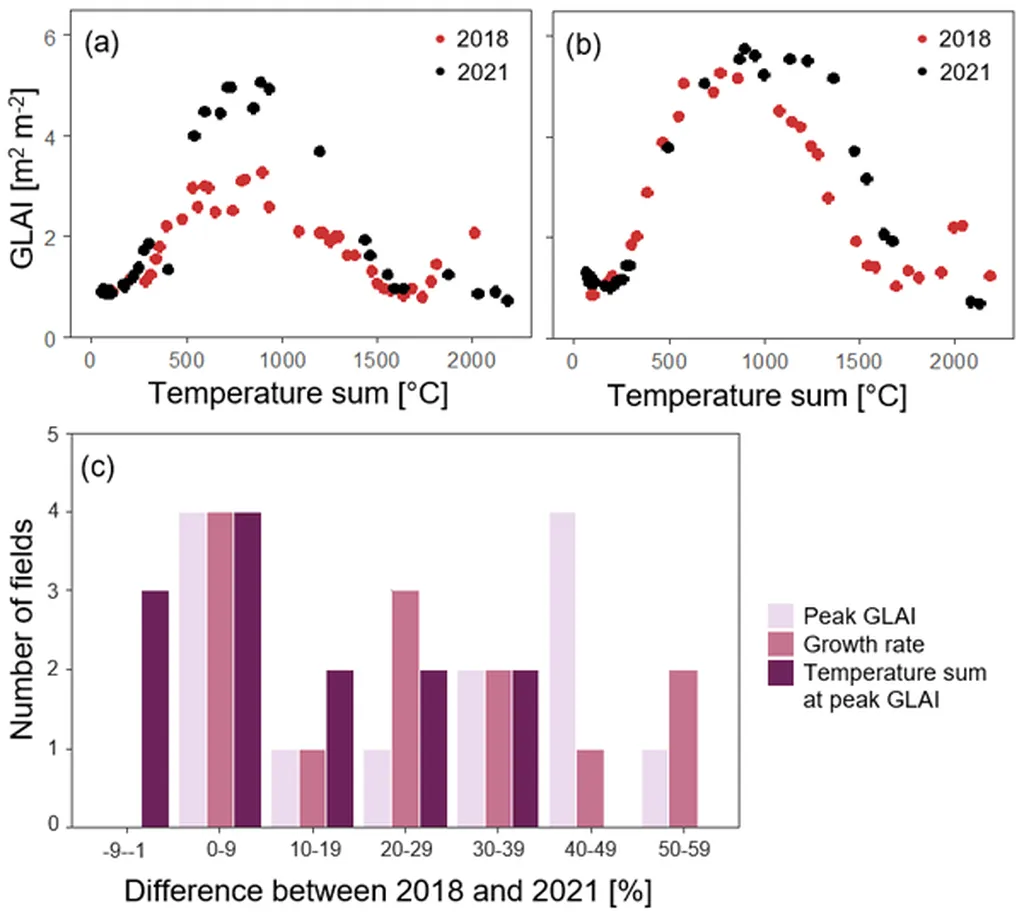In the heart of Northern Bulgaria, a groundbreaking study led by Milena Kercheva from the Institute of Soil Science, Agrotechnologies and Plant Protection “Nikola Poushkarov” is reshaping our understanding of how subsoiling can mitigate drought stress in crops. The research, published in the journal *Agriculture* (which translates to *Zemedelie* in Bulgarian), integrates remote sensing and ground data to evaluate the effects of subsoiling on maize and sunflower crops grown on Haplic Chernozem, a fertile soil type prevalent in the region.
Kercheva and her team focused on drought-prone areas without irrigation systems, where effective agrotechnologies like subsoiling are crucial for enhancing soil infiltration and water retention. The study addresses a significant knowledge gap: the differing responses of C3 (sunflower) and C4 (maize) crops to subsoiling under drought stress. “We wanted to understand how subsoiling impacts these two crop types differently, especially in the context of water scarcity,” Kercheva explained.
The research team evaluated various parameters, including soil physical properties, leaf area index (LAI), canopy temperature, crop water stress index (CWSI), soil moisture, and yield, under both conventional tillage and subsoiling. They also utilized optical and radar descriptive remote sensing products derived from Sentinel-1 and Sentinel-2 satellite data, coupled with machine learning algorithms to predict LAI. The results were promising, with a coefficient of determination (R²) greater than 0.42 after cross-validation, demonstrating good agreement with in situ observations.
The findings revealed that subsoiling had a positive effect on sunflower crops, improving LAI, water status, and slightly increasing yield. However, the same could not be said for maize, where subsoiling showed no significant positive impact. “This highlights the importance of crop-specific responses in evaluating subsoiling practices,” Kercheva noted. “Understanding these differences can help farmers make more informed decisions, ultimately enhancing agricultural productivity and sustainability.”
The integration of unmanned aerial systems (UAS) and satellite-based remote sensing data into agricultural drought monitoring adds significant value to the study. This approach not only provides real-time data but also offers a more comprehensive understanding of crop health and soil conditions. The research has profound implications for the energy sector, particularly in bioenergy production. As the demand for biofuels continues to grow, optimizing crop yields and water usage becomes increasingly critical. By adopting targeted agrotechnologies like subsoiling, farmers can enhance the productivity of drought-resistant crops, contributing to a more sustainable and efficient bioenergy supply chain.
Kercheva’s work underscores the need for tailored agricultural practices that consider the unique requirements of different crops. As climate change continues to exacerbate water scarcity, such studies will be instrumental in developing resilient agricultural systems. The integration of advanced technologies like remote sensing and machine learning further enhances our ability to monitor and manage crop health, paving the way for more sustainable and productive farming practices.
This research not only sheds light on the nuanced effects of subsoiling but also sets the stage for future developments in precision agriculture. By leveraging remote sensing and data analytics, farmers and agronomists can make more informed decisions, ultimately improving crop yields and resource efficiency. As the agricultural sector continues to evolve, studies like Kercheva’s will play a pivotal role in shaping the future of sustainable farming.

